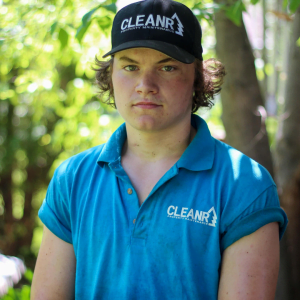
Fertilizer and Weed Control Winnipeg
Cleanr Property MaintenanceLearn More About Our Lawn Care Services
Weed Control Pricing
8 Application Weed Control Schedule
Spring
A high quality spring fertilizer mix is applied to your lawn to ensure a quick and healthy green up of your lawn. A full blanket spray of Par 3 weed control is applied to kill existing weeds and prevent more from sprouting.
Early Summer
An early summer fertilizer application gives your lawn the boost it needs to survive the hot summer months. Par 3 weed control is thoroughly applied to take care of any pesky weeds.
Late Summer
As the summer begins to wind down and the days start to get shorter, a boost of nutrition to the lawn allows it to stay green for longer. The lawn is also spot sprayed for any weeds that may still be kicking around.
Fall
As the warm months come to a close, a fall fertilizer gives your lawn the nutrition it needs as it begins to go dormant. This also helps to allow for a healthier lawn in the spring. A final application of Par 3 weed control is applied to the lawn.
Weed Control Schedule
Weed Control Winnipeg
Here at Cleanr Property Maintenance, we’re dedicated to making sure your yard looks it’s best, all year round. Our services extend into the winter months to ensure year-round lawn care. Winnipeg is a city with a history tightly linked to agriculture; there’s a reason our Golden Boy is holding wheat, after all! Our agricultural background comes from our fertile lands, but earth high in nutrients comes with it’s own set of disadvantages; there’s a lot of weeds that can grow here, be it in your lawn or in your garden.
That’s why we offer customers a comprehensive weed control strategy; one that gets rid of the plants you don’t want, while maintaining the plants that you do.
Our strategy effectively targets broadleaf weeds and crabgrass, ensuring that your lawn remains pristine and free of these common nuisances.
Get A Free Estimate
Why Choose Us
Your yard is a part of your home, and your home is your sanctuary. Our treatments are eco-friendly and non-toxic, keeping both families and pets safe. You might have areas that you don’t want us to spray because you know your kids will run on it before it’s dry, or you might have areas you want us to pay special attention to because you know you have had problems with weeds in those areas in the past. We appreciate how valuable your home is to you, and we’ll take special note of any instructions you have for us to ensure that your lawn is treated with the respect it deserves.
When Should I Fertilize My Lawn
Last year, you were less than impressed by the state of your lawn. Remember those brown patches? Barely-green blades of grass? And uncontrollable weed growth?
This year, you’re committed to bringing your lawn back to life. A little fertilizer should do the trick. If it’s your first time fertilizing your lawn (or you’ve had mixed results in the past), you’re probably wondering what the best way to go about it is.
Breathe new life into your lawn by using fertilizer. At Cleanr Property Maintenance Snow Removal & Lawn Care, we have years of experience in the lawn care and weed control service industry. Want to fertilize your lawn like a pro? In this article, we’re going to share a few of our tips with you:
When To Apply Lawn Fertilizer
We recommend applying fertilizer a few times throughout the year. If you apply too much lawn fertilizer, the soil will become too concentrated with salt and nitrogen, leading to dry, burnt grass. Too little, and your lawn will look the same as it did the year before: The grass will be malnourished and sparse.
The exact timing to keep a healthy lawn will vary based on the following factors:
Climate
If you Google the best time to fertilize your lawn, you’ll find some sites that say to start in February and others that encourage you to wait until April. To know the right time for your area, it’s important to consider the climate of your city. After all, warm weather arrives much later in Winnipeg than in Oklahoma City.
Spring officially starts in March, but most years, there’s still snow on the ground in Winnipeg when that day arrives. In this article, when we refer to “spring”, we mean once the snow has melted.
Type of grass
Did you know that there are different types of turf grasses? The two main types of grass are:
- Warm-season grasses. Warm season-grasses love the sun and thrive in warm weather. They start growing in late spring/early summer and become dormant in the fall. The most popular types are Bermuda grass and St. Augustine grass.
- Cool-season grasses. These grasses remain green later into the fall and enter their active growing season in early spring. Direct sunlight may be too intense for cool-season grasses; shade helps them stay cool. They’re not as tolerant of the heat and will turn brown without enough water (especially on hot days). A few examples of cool-season grasses include Kentucky bluegrass and fescues.
Depending on which grass type you have, the exact timing of your fertilizer schedule will vary. Not sure what type of grass your lawn is? Give us a call! Our lawn care experts will be happy to help.
Setting a Schedule
So, how often should you fertilize your lawn?
The first application should be when your grass enters the active growing phase (usually early spring). You want to be sure to apply the first dose of lawn fertilizer before summer temperatures peak.
During the summer, you can apply fertilizer one or two more times. If you have cool-season grass, use a light amount of fertilizer during the hottest months. Warm-season grasses will benefit more from summer feeding.
Have you recently reseeded your lawn? If so, be sure to select a starter fertilizer that’s designed for these lawns.
Finally, apply the last round of fertilizer in the fall. We recommend a slow-release fertilizer for this season. This will supply your grass with the nutrients it needs to recover from the hot, dry summer. It also gives your grass a boost that will help it endure the winter. By the time spring comes again, your grass will be healthy, green, and ready for the next feeding.
FAQ
We’re going to clear up the most common questions and concerns about when and how to apply fertilizer:
How regularly should you fertilize your lawn?
In most cases, we recommend that homeowners fertilize their lawns a few times a year, once in the early spring (or late spring, if you have warm-season grass) and once in the early fall.
What is the best month to fertilize your lawn?
To get a green, healthy lawn, apply fertilizer in April; this will give your lawn the boost it needs to grow all summer long.
When should fertilizer be applied to a lawn?
Use fertilizer when your grass is actively growing: After the snow melts but before the summer temperatures peak.
Should I fertilize before or after mowing?
We recommend using fertilizer after you mow your lawn. With less grass and weeds in the way, the fertilizer will have an easier time getting into the soil.
How long should fertilizer be down before it rains?
When you’re applying fertilizer, be sure to consider the rain forecast. Applying fertilizer a day or two before it is set to rain is a great idea; the water will help the fertilizer wash off the grass blades and absorb into the soil.
Don’t fertilize before a heavy rainstorm. The water might flood your lawn, causing the fertilizer to run off into street puddles and storm drains. And finally, don’t plan a fertilizer application during a drought.
Book Our Lawn Care Services Today!
Follow this guide, and you’ll have a lawn that looks like a lush paradise. Still, it never hurts to get the help and advice of a lawn maintenance professional. If you’re looking for a comprehensive fertilizer and weed control service, we can help!
At Cleanr Property Maintenance, we’ll follow up your fertilizer mix with a full blanket spray of Fiesta weed control service; this encourages grass to grow and weeds to stay dormant.
With our platinum fertilizer and weed control service, you won’t have to worry about a thing. Enjoy the spring and summer months with a healthy green lawn. Book your lawn service now!
Our Team Is Looking Forward To Taking Care of Your Home!






